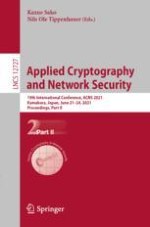2021 | OriginalPaper | Buchkapitel
Proactive Detection of Phishing Kit Traffic
verfasst von : Qian Cui, Guy-Vincent Jourdan, Gregor V. Bochmann, Iosif-Viorel Onut
Erschienen in: Applied Cryptography and Network Security
Aktivieren Sie unsere intelligente Suche, um passende Fachinhalte oder Patente zu finden.
Wählen Sie Textabschnitte aus um mit Künstlicher Intelligenz passenden Patente zu finden. powered by
Markieren Sie Textabschnitte, um KI-gestützt weitere passende Inhalte zu finden. powered by
